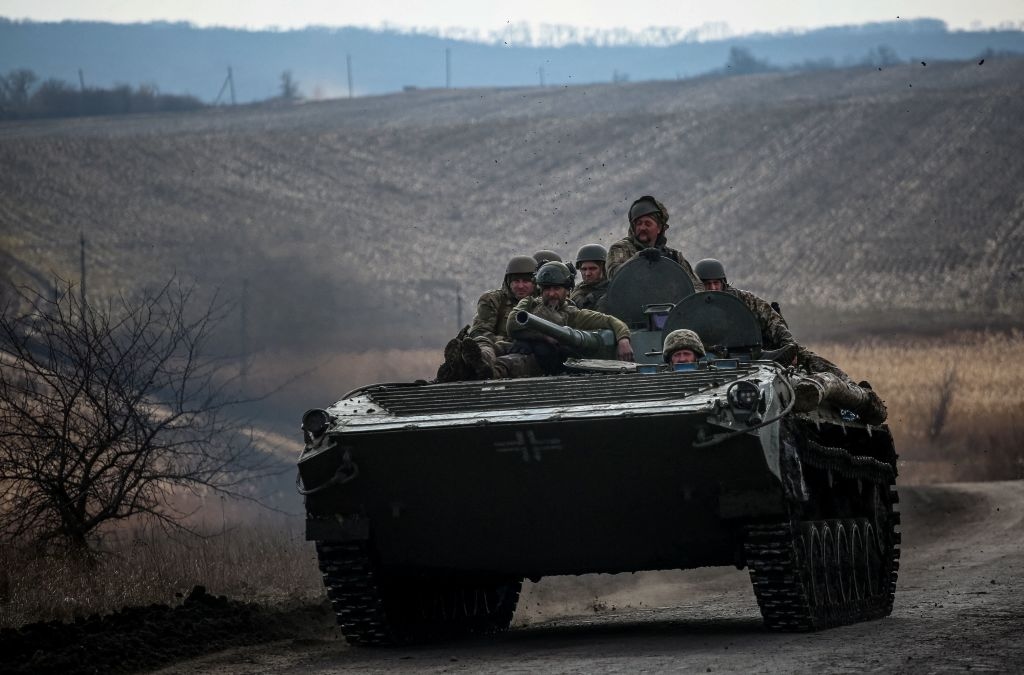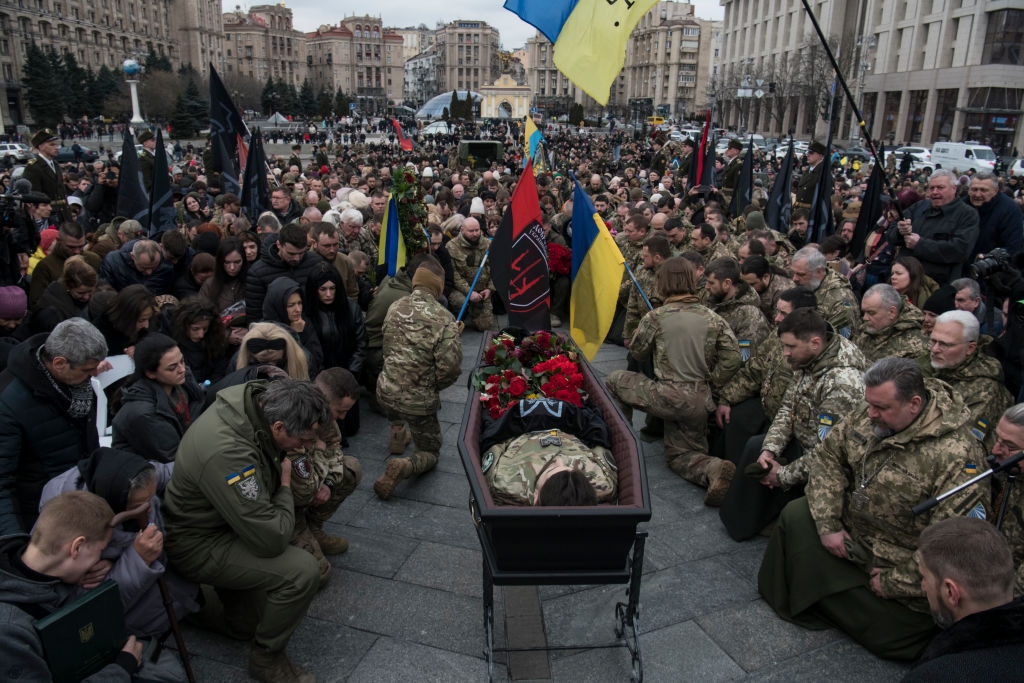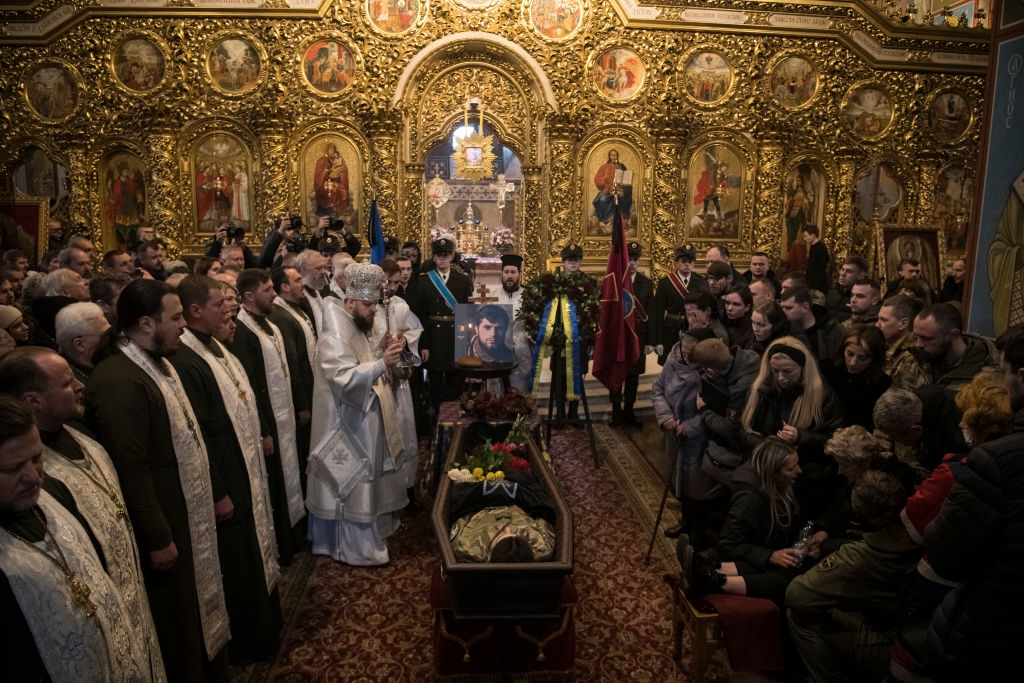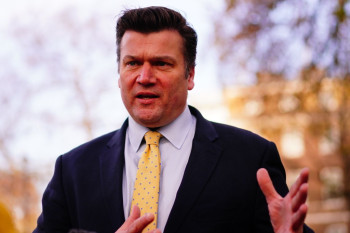Ukraine war latest: Ukraine holds onto Bakhmut as the country mourns legendary soldier killed near the ruined city

Key developments on March 10:
- Russia continues its assaults on Bakhmut, Donetsk Oblast
- At least 8 wounded in Russian attack of Kostyantynivka, Donetsk Oblast
- Norway says it will send Ukraine 2 NASAMS air defense systems
- Finland's Prime Minister visits Kyiv, meets Zelensky
Ukraine's Defense Ministry acknowledged on March 10 that the battle for Bakhmut is becoming more difficult as Russia keeps up its offensive and continues trying to "break through the defenses of our troops."
The Ukrainian military said that 57 attacks were recorded on the Bakhmut sector in the northern Donetsk Oblast over the past day.
Recent satellite images of Bakhmut – a city nearly emptied of its 70,000 residents – captured by American private satellite company Maxar Technologies published on March 10 showed an apocalyptic-looking city with damaged buildings and a railroad bridge.
Eight-month-long battle for Bakhmut has reduced once a cozy small city into rubble.
Ukraine's reports of tough battles in the Bakhmut area come a day after the military leadership warned that "every move and decision can radically change" the situation, and the battle remains "very difficult."
Russia has been intensifying its offensive on the Bakhmut front since mid-January, slowly capturing settlement after settlement to encircle the city.
Capturing Bakhmut would mark Russia's biggest victory since early summer when it seized the last Ukrainian strongholds of Luhansk Oblast.
On March 10, Kostyantynivka, a city some 25 kilometers southeast of Bakhmut, underwent a heavy Russian attack. At least eight were wounded after residential areas were struck by Russian S-300 missiles and Uragan multiple rocket launchers, the regional prosecutor's office reported.
As Russia's offensive rages on near Bakhmut, more nearby settlements – like Kostyantynivka – are coming under frequent attacks.
The Institute for the Study of War (ISW), a D.C.-based think-tank analyzing the war in Ukraine, said that it confirms the Wagner mercenary boss' March 9 report of Russian forces advancing northwest of Bakhmut.
"Russian forces likely advanced northwest of Bakhmut on March 9 amidst a likely increased tempo of Russian offensive operations in the area," the ISW said.
However, the report also said that Wagner's offensive has likely entered a "temporary tactical pause" in eastern Bakhmut after conducting "highly attritional frontal assaults" there.
It added that the Russian forces have seized all of eastern Bakhmut located east of the Bakhmutka River as of March 7, and "it remains unclear if Wagner fighters retain their operational preponderance in future Russian offensives in the city."

Mourning the fallen hero
More than 600 kilometers west of Bakhmut, thousands of Ukrainians gathered in central Kyiv to say their last goodbyes to the fallen soldier Dmytro Kotsiubailo, killed in action near Bakhmut on March 7.
The 27-year-old battalion commander, better known as "Da Vinci," was from the 67th Separate Mechanized Brigade and had been fighting in the war for nine years.

Kotsiubailo was severely wounded by a Russian tank in Donetsk Oblast back in 2014 but immediately returned to the front line after three months of recovery. He has fought Russia ever since.
Kotsiubailo was among the most decorated Ukrainian soldiers, being awarded the Hero of Ukraine national title in 2021.
President Volodymyr Zelensky, Defense Minister Oleksii Reznikov, Commander-in-Chief Valerii Zaluzhnyi, and Military Intelligence Chief Kyrylo Budanov were among the funeral attendees.
Finnish Prime Minister Sanna Marin, who was visiting Kyiv on March 10 and met with Zelensky, also attended the funeral.
"Every day we lose Ukrainian sons and daughters in a war that Ukraine did not start," Zelensky said later during a virtual speech at the American Enterprise Institute World Forum on March 10.
Zelensky said that Kotsiubailo had dreamt of becoming an artist and thus went by a call sign after the well-known Italian artist.
"People who could be artists or politicians, entrepreneurs or journalists, scientists or diplomats. Anyone who would be alive if not for Russia."
Foreign military aid
Besides the funeral, Finnish Prime Minister Sanna Marin met with Zelensky and visited a hospital where wounded soldiers receive treatment on March 10.
In an interview with the Finnish state-owned broadcaster YLE, Marin said on March 10 that she said that the possibility of Finland transferring its retired F/A-18 hornet fighter jets could be discussed.
"I think we can have a discussion regarding the Hornets as well, whether it would be possible to hand them over to Ukraine and what kind of training it would require," Marin said.
The Finish official's comment comes amid Ukraine's months-long plea for Western fighter jets. NATO allies have so far given Ukraine mixed signs, with most of them saying that it's a hard no for now.
However, during Zelensky's trip to the U.K. in February, British Prime Minister Rishi Sunak confirmed that his country is ready to begin training Ukrainian troops on Western-style fighter jets.
In an exclusive interview with the Kyiv Independent, the British Minister of State for the Armed Forces, James Heappey, said "the decision on the jets was for another day."
"I think the reality is that jets are very complicated to hand over. Pilot training is a significant task," Heappey told the Kyiv Independent.
Meanwhile, Norway on March 10 announced that it would provide Ukraine with two National Advanced Surface-to-Air Missile Systems (NASAMS) in cooperation with the U.S., bringing the total number of systems at Ukraine's disposal to 10.
Vuhledar front
The situation near Vuhledar, in the southern Donetsk Oblast, remains difficult, Colonel Oleksii Dmytrashkivskyi, a spokesman for the Ukrainian forces in the area, said on March 10.
Speaking on television, Dmytrashkivskyi said that the Russians continue to conduct shelling and ground assaults.
Dmytrashkivskyi predicted that Russia had to reduce its pace of offensive near Vuhledar because its logistics – including equipment and manpower – have been disrupted by Ukraine in the southeastern Zaporizhzhia Oblast.
The military official claimed that on the Vuhledar front, Russian forces were unable to keep up their offensive due to heavy losses. He suggested that Russia was restoring its forces after two battalions – each usually up to 1,000 soldiers – were depleted.
However, the ISW said in its March 9 report that Russia could be planning to resume its offensive around the town of Vuhledar, but its logistics problems would make it hard for them to progress.
"Persistent personnel and ammunition issues will likely continue to constrain Russian forces from advancing," the ISW said.
















